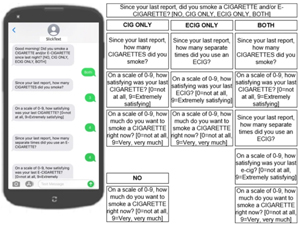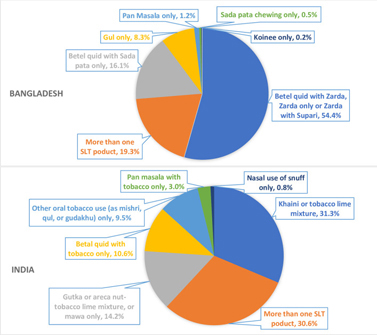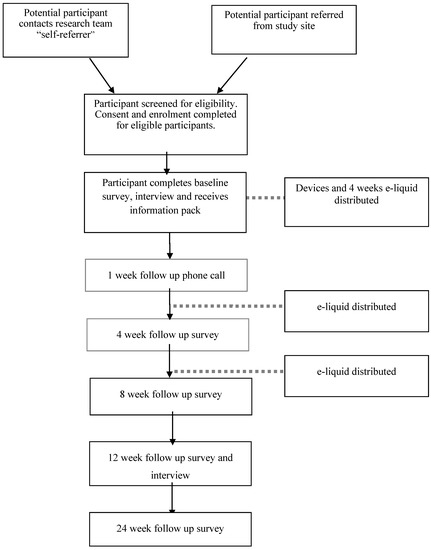Examining the Longitudinal Relationship Between Perceived and Actual Message Effectiveness: A Randomized Trial
We sought to examine the relationship between perceived message effectiveness (PME) and actual message effectiveness (AME) in a 3-week randomized trial of vaping prevention advertisements. Participants were US adolescents (n = 1,514) recruited in 2021. We randomly assigned them to view The Real Cost vaping prevention ads or control videos online.
Correction to: The Use and Interpretation of Race and Ethnicity in Nicotine & Tobacco Research
In the originally published version of this manuscript the title was incorrectly given as “The Use and Interpretation of Race and Ethnicity in Research on Tobacco and Nicotine Product Research”. The correct title is “The Use and Interpretation of Race and Ethnicity in Research on Tobacco and Nicotine Products”.
Usage Pattern and Nicotine Delivery during Ad Libitum Consumption of Pod E-Cigarettes and Heated Tobacco Products
Many different nicotine delivery products, such as e-cigarettes (e-cigs) or heated tobacco products (HTPs), are available on the market. To better understand these products, it is crucial to learn how consumers use them and how much nicotine they deliver. Therefore, a pod e-cig, an HTP, and a conventional cigarette (CC) were each used by 15 experienced users of the respective product category for 90 min without special use instructions ("ad libitum").
The associations between e-liquid characteristics and its pricing: Evidence from online vape shops
Given the increase in electronic cigarette use during the past decade, the objectives of this study are to obtain comprehensive product-level information from online vape shops, which are one of the most common outlets for e-cigarette users to purchase vaping products, especially e-liquid products, and to examine the appeal of various e-liquid product attributes to consumers. We used web scraping and estimation of generalized estimating equation (GEE) models to obtain and analyze data from five popular online vape shops that sell nationwide across the US.
Sensory appeal and puffing intensity of e-cigarette use: Influence of nicotine salts versus free-base nicotine in e-liquids
Background: In the US, nicotine salts (with protonated nicotine instead of free-based nicotine) have been reported to lower the harshness and bitterness of e-cigarette aerosols, making it easier to inhale high levels of nicotine. This study aimed to determine whether nicotine salts also increase sensory appeal at lower concentrations (< 20mg/mL). Moreover, and novel, inhalation intensity of both types of e-liquids was compared.
A Machine Learning Approach Reveals Distinct Predictors of Vaping Dependence for Adolescent Daily and Non-Daily Vapers in the COVID-19 Era
Since 2016, there has been a substantial rise in e-cigarette (vaping) dependence among young people. In this prospective cohort study, we aimed to identify the different predictors of vaping dependence over 3 months among adolescents who were baseline daily and non-daily vapers. We recruited ever-vaping Canadian residents aged 16-25 years on social media platforms and asked them to complete a baseline survey in November 2020. A validated vaping dependence score (0-23) summing up their responses to nine questions was calculated at the 3-month follow-up survey.
Latent Classes of Tobacco and Cannabis Use among Youth and Young Adults in the United States
Background: Research characterizing patterns of tobacco and cannabis use by product type and route of administration among youth and young adults (YAs) is limited. Methods: We conducted latent class analysis of tobacco and cannabis use (i.e., cigarettes, electronic nicotine delivery systems (ENDS), cigars, blunts, cannabis vaping, and other cannabis use (without blunting/vaping)) among youth (ages 15-17) and YAs (ages 18-24) who used at least one product in the past 30 days, using data from the Population Assessment of Tobacco and Health Study (Wave 4, 2016-2017).
Homogeneous and air-water interface properties of nicotine relative to aqueous aerosol: Adsorption, oxidation, and the influence for the HNCO formation
Nicotine is the most abundant alkaloid compound in cigarette smoke and a known "emerging contaminant" in gas and aqueous environments. The main environmental behavior of nicotine is to be deposited on various surfaces. Aerosol droplets have a rich specific surface area, which has a great influence on air quality and human health. However, the microscopic interaction between aqueous nanoparticles and nicotine has not been revealed. In this work, the theoretical simulation of the adsorption and reaction properties of nicotine onto aerosol droplets is performed.
Research
Reports
Featured Posts
Electronic cigarettes as a harm reduction strategy among patients with COPD: protocol for an open-label two arm randomized controlled pilot trial




